Search Result
Results for "
T-type
" in MedChemExpress (MCE) Product Catalog:
5
Isotope-Labeled Compounds
| Cat. No. |
Product Name |
Target |
Research Areas |
Chemical Structure |
-
- HY-10035
-
|
T-type calcium channel inhibitor
|
Calcium Channel
|
Neurological Disease
|
|
TTA-P2 (T-Type calcium channel inhibitor) is a potent inhibitor of T-Type calcium channel. TTA-P2 penetrates well the CNS and blocks the native T-type currents in deep cerebellar nuclear neurons, the window current is completely abolished both for wild-type and mutant Cav3.1 channels. TTA-P2 has the potential for the research of neurology disease .
|
-
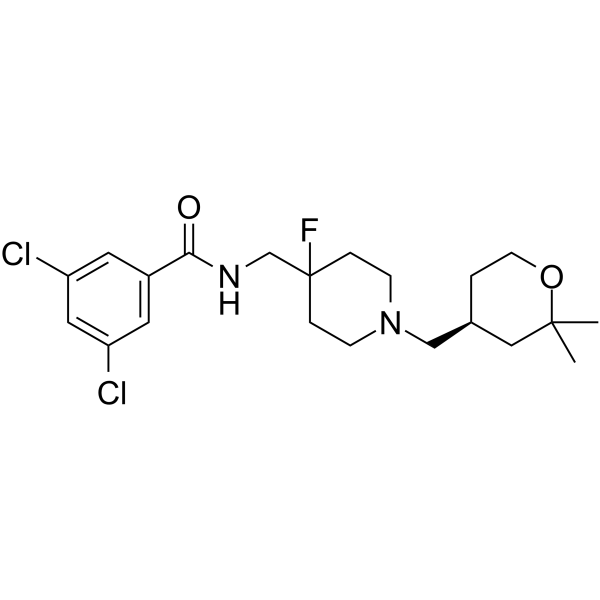
-
- HY-50707
-
|
(Rac)-T-type calcium channel inhibitor
|
Others
|
Neurological Disease
|
|
(Rac)-TTA-P2 is the isomer of TTA-P2 (HY-10035), and can be used as an experimental control. TTA-P2 (T-Type calcium channel inhibitor) is a potent inhibitor of T-Type calcium channel. TTA-P2 penetrates well the CNS and blocks the native T-type currents in deep cerebellar nuclear neurons, the window current is completely abolished both for wild-type and mutant Cav3.1 channels. TTA-P2 has the potential for the research of neurology disease .
|
-
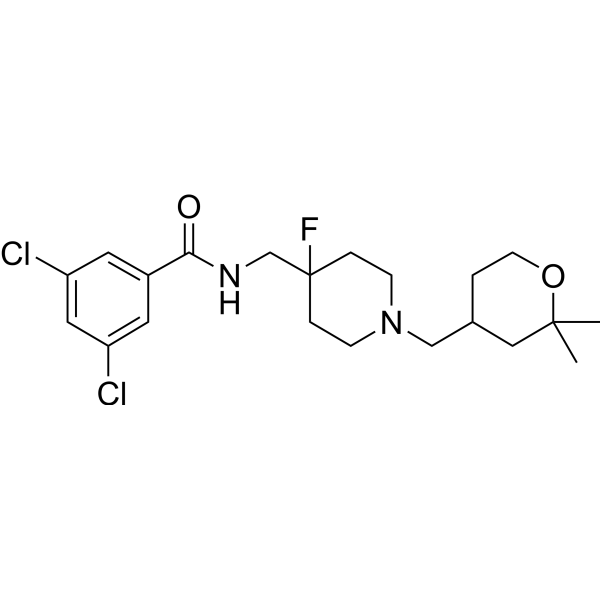
-
- HY-10035A
-
|
|
Others
|
Neurological Disease
|
|
(R)-TTA-P2 is the isomer of TTA-P2 (HY-10035), and can be used as an experimental control. TTA-P2 (T-Type calcium channel inhibitor) is a potent inhibitor of T-Type calcium channel. TTA-P2 penetrates well the CNS and blocks the native T-type currents in deep cerebellar nuclear neurons, the window current is completely abolished both for wild-type and mutant Cav3.1 channels. TTA-P2 has the potential for the research of neurology disease .
|
-
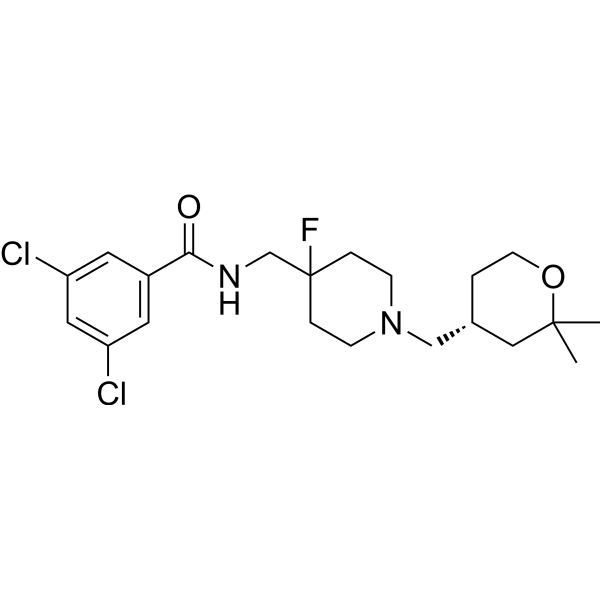
-
- HY-147708
-
|
|
Calcium Channel
|
Cancer
|
|
T-Type calcium channel inhibitor 2 (compound 6g) is a potent T-type calcium channel inhibitor with IC50s of 31.0, 83.1, 69.3 µM for Cav3.1 (α1G), Cav3.2 (α1H), Cav3.3 (α1I) (α1H), respectively. T-Type calcium channel inhibitor 2 shows cytotoxicity for A549, HCT-116 cells with IC50s of 5.0, 6.4 µM, respectively .
|
-
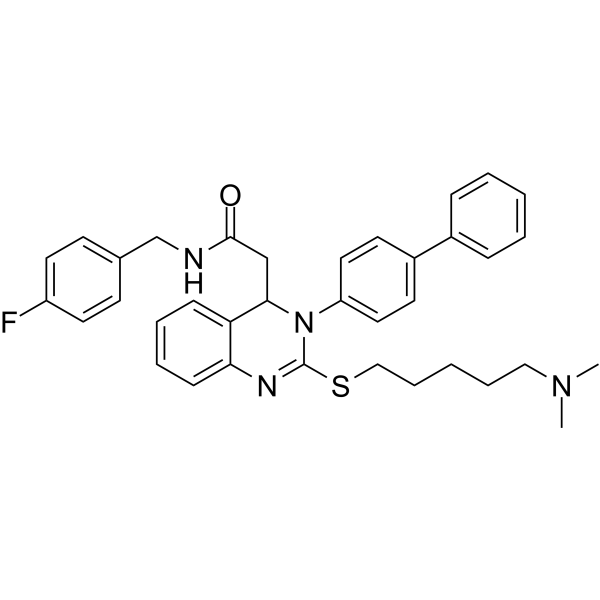
-
- HY-150539
-
-
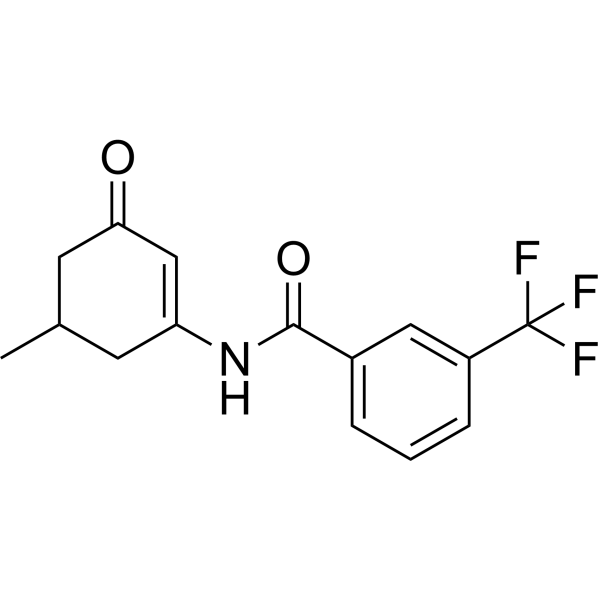
-
- HY-150541
-
-
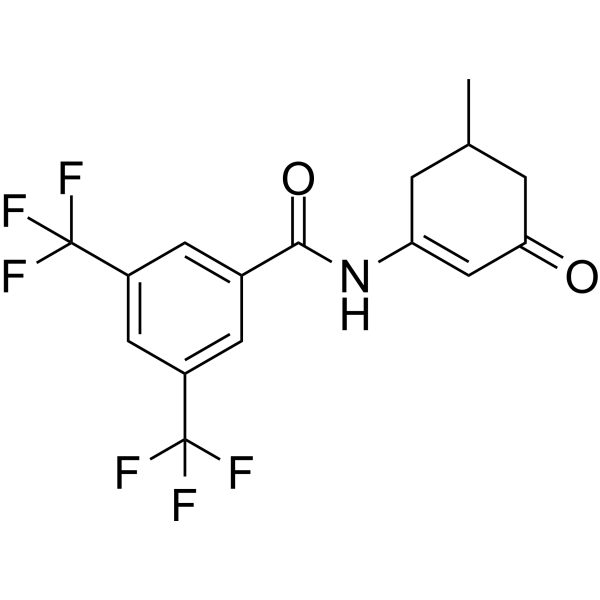
-
- HY-P5869
-
|
|
Calcium Channel
Sodium Channel
|
Neurological Disease
|
|
Kurtoxin is a selective Cav3 (T-type) voltage-gated Ca 2+ channel gating inhibitor with a Kd of 15 nM for Cav3.1 (α1G T-type) Ca 2+ channel. Kurtoxin can interact with high affinity with native neuronal high-threshold L-type, N-type, and P-type Ca 2+ channels in central and peripheral neurons. Kurtoxin also shows cross-reactivity with voltage-gated Na + channel .
|
-

-
- HY-10955
-
|
|
Calcium Channel
|
Neurological Disease
|
|
TTA-P1 is a potent state-independent compound inhibiting human T-type calcium channel. T-type calcium channels play a role in diverse physiological responses including neuronal burst firing, hormone secretion, and cell growth. TTA-P1 has the potential for the research of absence epilepsy .
|
-
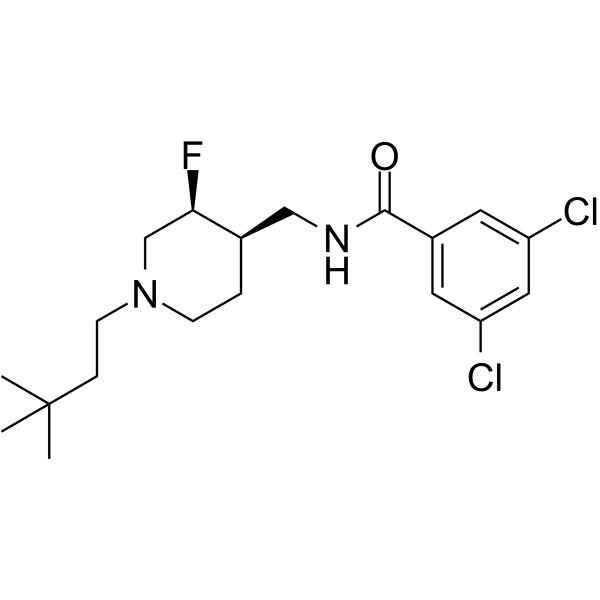
-
- HY-154832
-
|
|
Calcium Channel
|
Cardiovascular Disease
|
|
Cav 3.2 inhibitor 4 (compound 21) is a potent, peripherally restricted, selective T-type calcium channel (Cav3.2) inhibitor, with an IC50 of 0.6 μM. Cav 3.2 inhibitor 4 can be used for the research of atrial fibrillation .
|
-
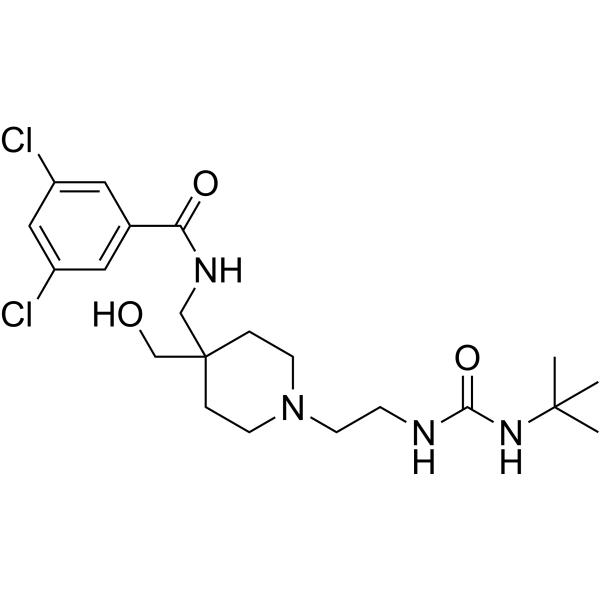
-
- HY-151450
-
-

-
- HY-14232
-
|
|
Calcium Channel
|
Neurological Disease
|
|
TTA-A8 (Compound 13) is a short-acting T-type calcium channel antagonist with oral activity, exhibiting an IC50 value of 31.3 nM in the FLIPR depolarization assay. TTA-A8 possesses favorable pharmacokinetic properties, making it suitable for research on epilepsy and sleep .
|
-
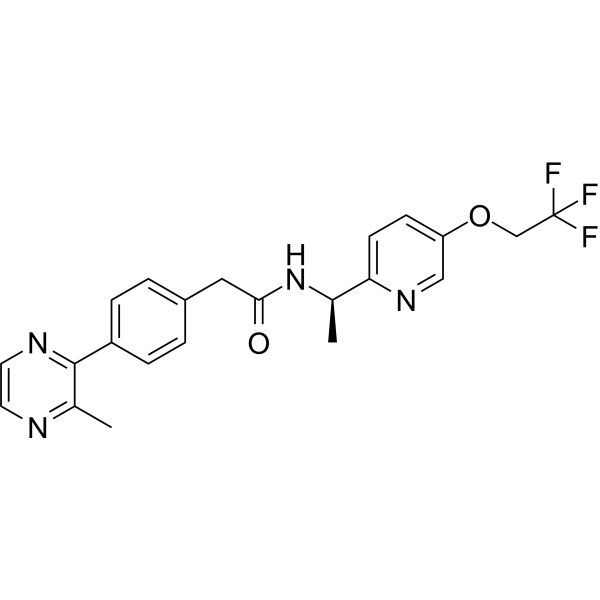
-
- HY-A0092
-
|
3,5,5,-Trimethyloxazolidine-2,4-dione
|
Calcium Channel
|
Neurological Disease
|
|
Trimethadione (3,5,5,-Trimethyloxazolidine-2,4-dione) is an oxazolidinedione anticonvulsant agent widely used against absences seizures. Trimethadione also is a T-type calcium channel blocker which has antihyperalgesic effects .
|
-
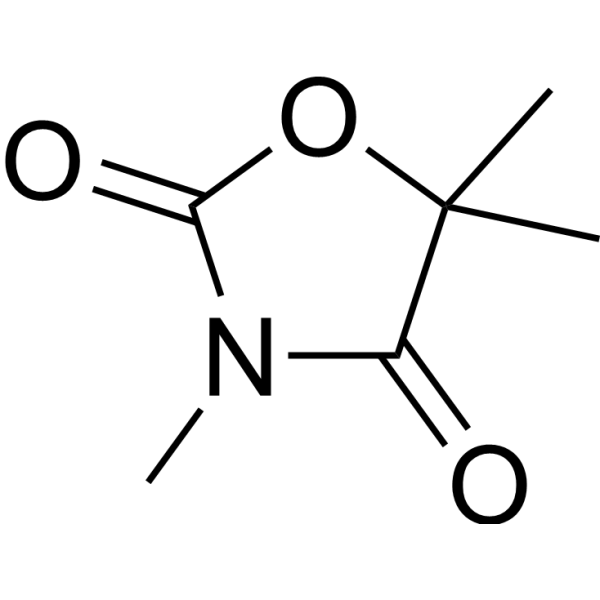
-
- HY-B0768A
-
-
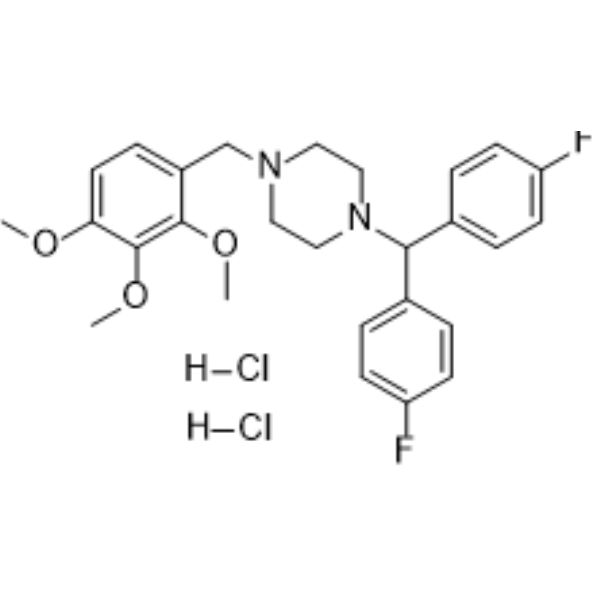
-
- HY-151452
-
|
|
Calcium Channel
|
Neurological Disease
|
|
Cav 3.2 inhibitor 3 (Compound 4) is a potent Cav3.2 T-type Ca 2+ channel inhibitor with an IC50 of 0.1534 μM, and has little binding affinity to D2 receptors .
|
-
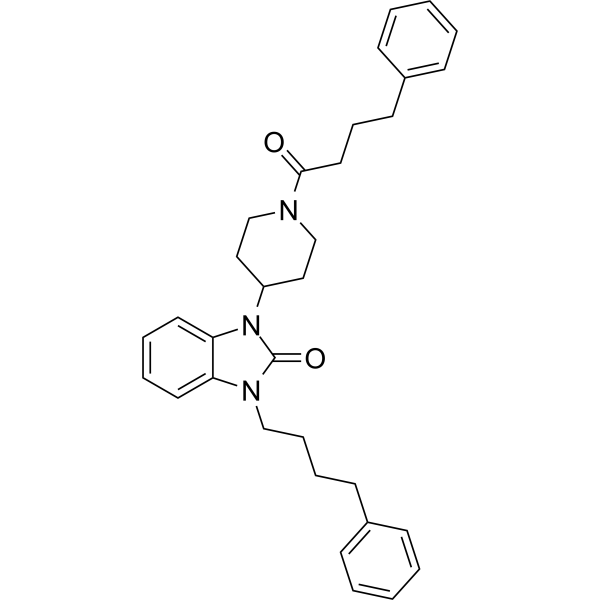
-
- HY-15553A
-
|
Ro 40-5967 dihydrochloride
|
Calcium Channel
|
Cardiovascular Disease
Cancer
|
|
Mibefradil dihydrochloride (Ro 40-5967 dihydrochloride) is a calcium channel blocker with moderate selectivity for T-type Ca 2+ channels (IC50s of 2.7 μM and 18.6 μM for T-type and L-type currents, respectively) .
|
-
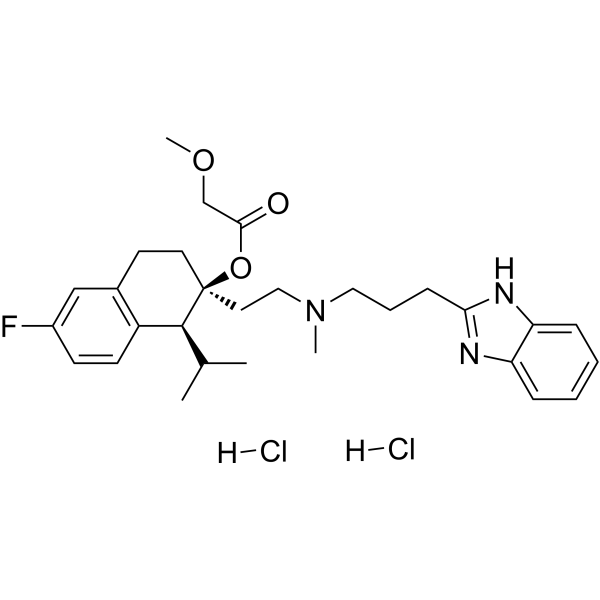
-
- HY-15553
-
|
Ro 40-5967
|
Calcium Channel
|
Cardiovascular Disease
|
|
Mibefradil (Ro 40-5967) is a calcium channel blocker with moderate selectivity for T-type Ca 2+ channels displaying IC50s of 2.7 μM and 18.6 μM for T-type and L-type currents, respectively .
|
-
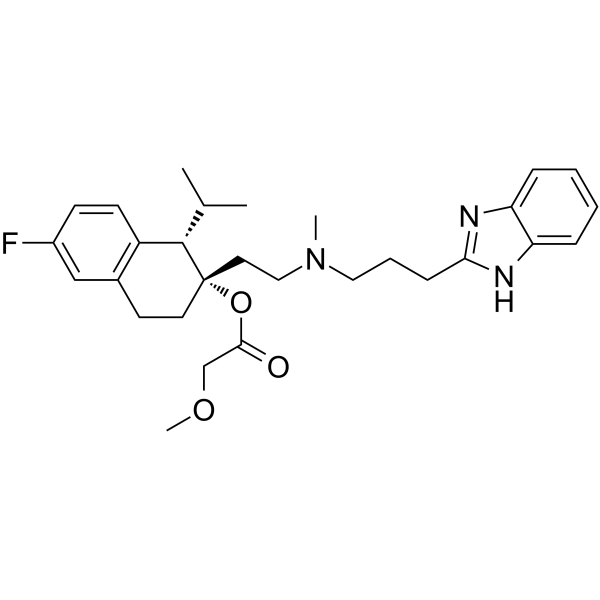
-
- HY-50722
-
|
NNC 55-0396 dihydrochloride
|
Calcium Channel
|
Cardiovascular Disease
Neurological Disease
|
|
NNC 55-0396 is a highly selective T-type calcium channel blocker with an IC50 value of 6.8 μM for Cav3.1 T-type channels. NNC 55-0396 can be used for the research of neurological disease research .
|
-
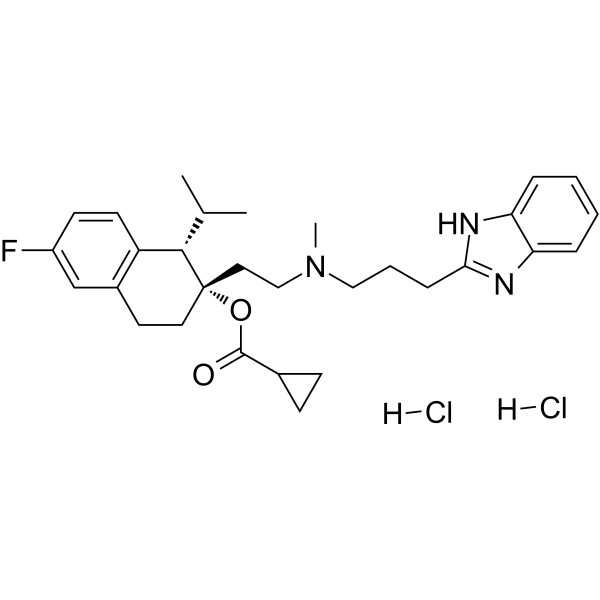
-
- HY-147638
-
|
|
Calcium Channel
|
Neurological Disease
|
|
MONIRO-1 is a T-type and N-type calcium channel blocker with IC50 values of 34, 3.3, 1.7 and 7.2 µM against hCav2.2, hCav3.1, hCav3.2 and hCav3.3, respectively .
|
-
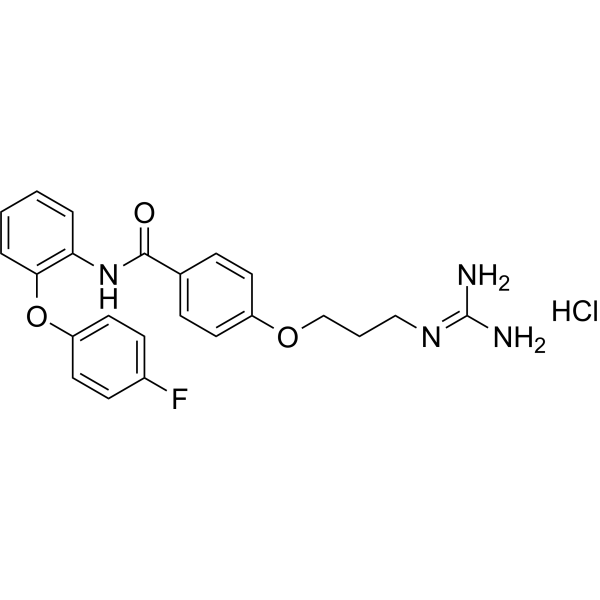
-
- HY-12502
-
-
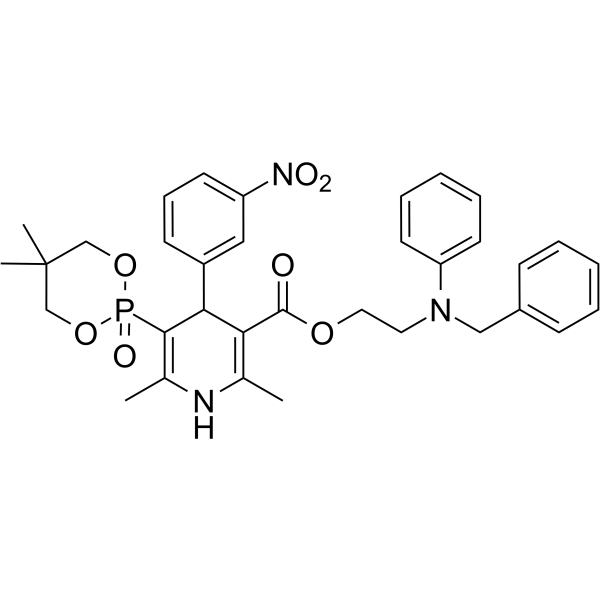
-
- HY-12502B
-
-
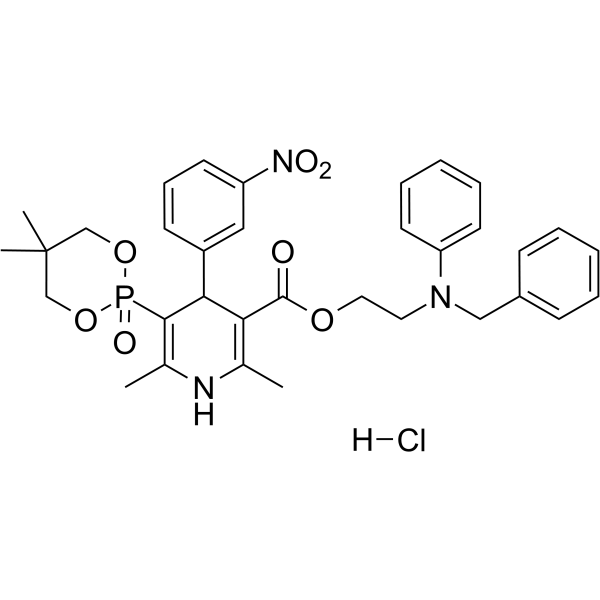
-
- HY-19721
-
-

-
- HY-101096
-
-
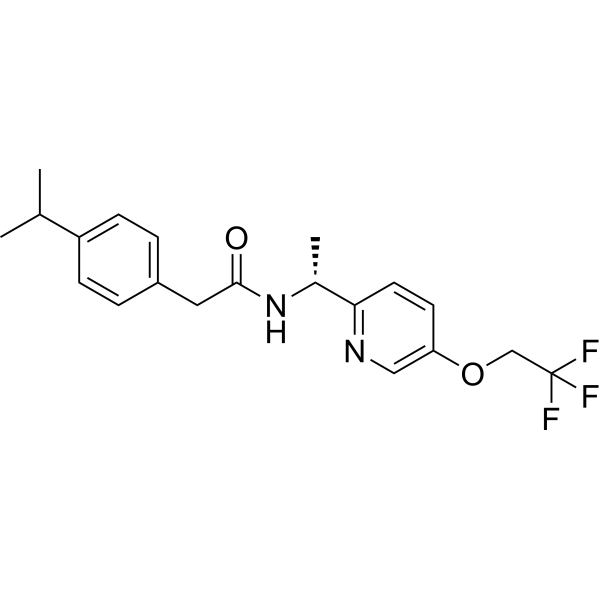
-
- HY-101616
-
-
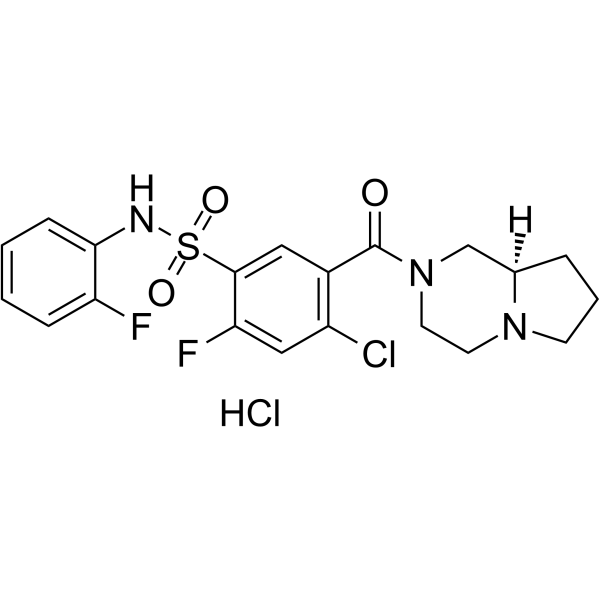
-
- HY-12502A
-
|
NZ-105 hydrochloride monoethanolate
|
Calcium Channel
|
Cardiovascular Disease
|
|
Efonidipine hydrochloride monoethanolate (NZ-105 hydrochloride monoethanolate) is a dual T-type and L-type calcium channel blocker (CCB).
|
-
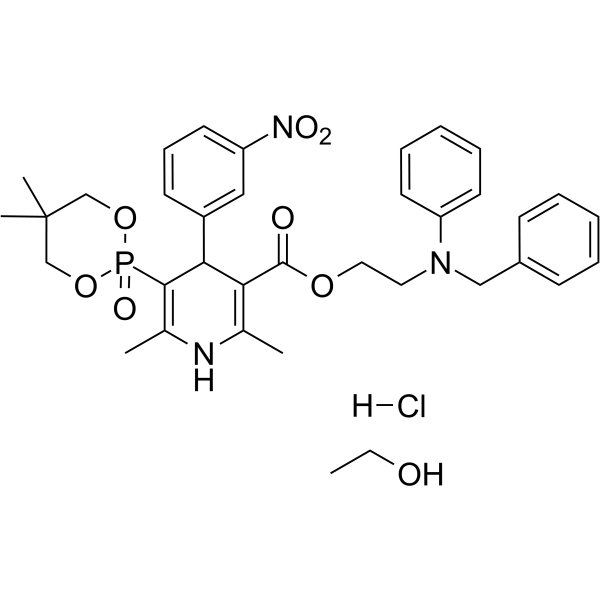
-
- HY-120546
-
|
Z944
|
Calcium Channel
|
Neurological Disease
|
|
Ulixacaltamide (Z944) is an orally active T-type calcium channel antagonist that rescues impairments in crossmodal and visual recognition memory.
|
-
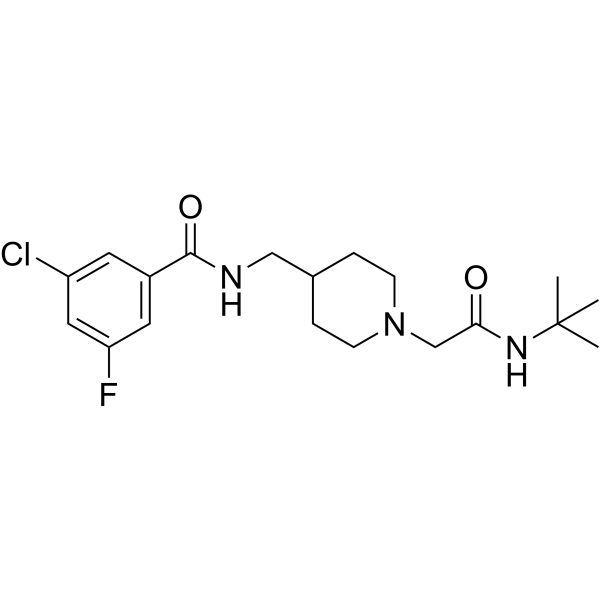
-
- HY-10388
-
-

-
- HY-115681
-
|
6-Prenylnaringenin; (±)-6-Prenylnaringenin
|
Calcium Channel
|
Neurological Disease
|
|
(2R/S)-6-PNG (6-Prenylnaringenin) is a potent and reversible Cav3.2 T-type Ca 2+ channels (T-channels) blocker. (2R/S)-6-PNG can penetrate the blood-brain barrier (BBB). (2R/S)-6-PNG suppresses neuropathic and visceral pain in mice .
|
-
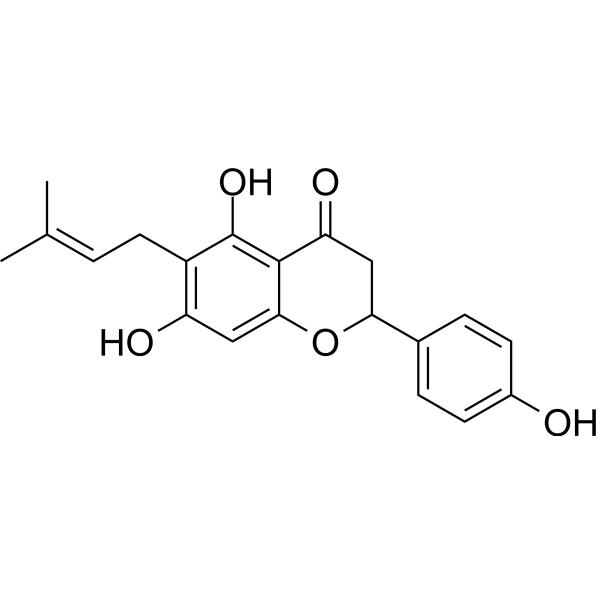
-
- HY-B1378
-
|
|
Calcium Channel
|
Neurological Disease
Cancer
|
|
Ethosuximide, a widely prescribed anti-epileptic agent, improves the phenotypes of multiple neurodegenerative disease models and blocks the low voltage activated T-type calcium channel.
|
-
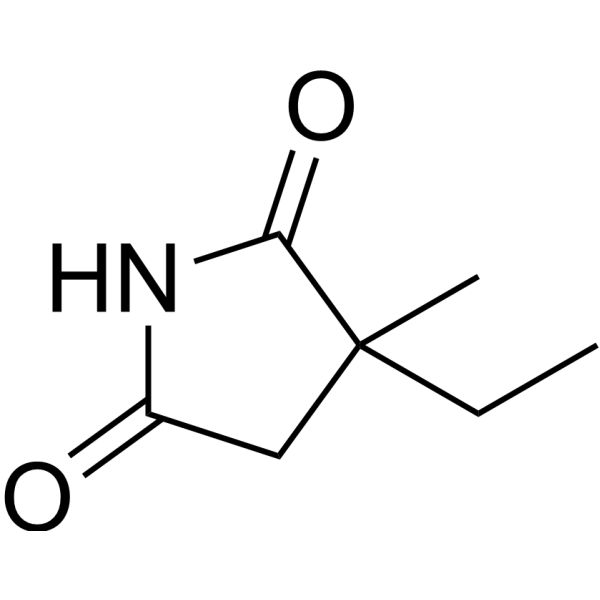
-
- HY-120597
-
|
|
Calcium Channel
|
Neurological Disease
|
|
SAK3 is a potent T-type voltage-gated Ca 2+ channels (T-VGCCs) enhancer. SAK3 enhances Cav3.1 and Cav3.3 T-type Ca 2+ channel currents. Acute SAK3 administration improves memory deficits in olfactory-bulbectomized mice . SAK3 inhibits amyloid β plaque formation in APP-KI mice by activating the proteasome activity .
|
-
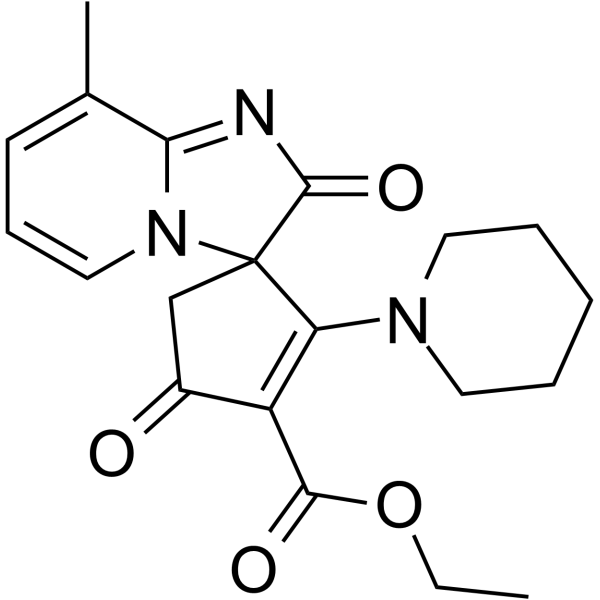
-
- HY-10388A
-
|
|
Calcium Channel
|
Others
|
|
TTA-Q6(isomer) is an isomer of TTA-Q6. TTA-Q6 is a selective T-type Ca 2+ channel antagonist.
|
-

-
- HY-161076
-
-

-
- HY-112723
-
|
ACT-709478
|
Calcium Channel
|
Neurological Disease
|
|
Apinocaltamide (ACT-709478) is a potent, selective, orally active, and brain penetrating T-type calcium channel blocker. ACT-709478 is used in the research of generalized epilepsies .
|
-
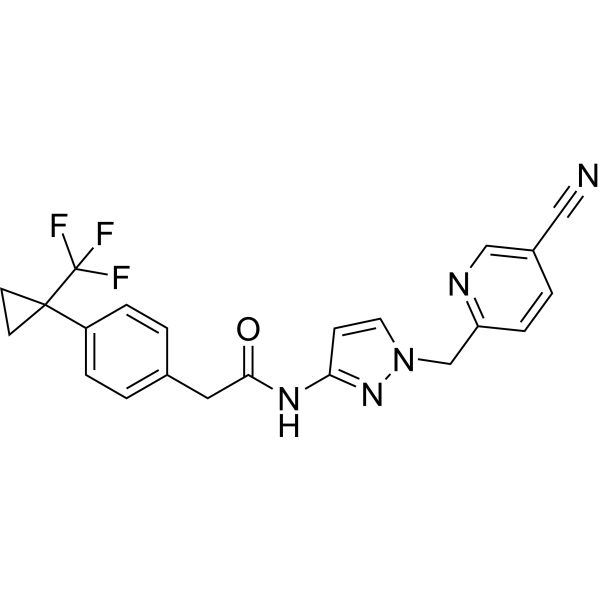
-
- HY-103309
-
|
|
Calcium Channel
|
Neurological Disease
|
|
ML218 is a potent, selective and orally active T-type Ca 2+ channels (Cav3.1, Cav3.2, Cav3.3) inhibitor with IC50s of 310 nM and 270 nM for Cav3.2 and Cav3.3, respectively. ML218 inhibits the burst activity in subthalamic nucleus (STN) neurons. ML218 has no significant inhibition of L- or N-type calcium channels, KATP or hERG potassium channels. ML218 can penetrate the blood-brain barrier .
|
-

-
- HY-103309A
-
|
|
Calcium Channel
|
Neurological Disease
|
|
ML218 hydrochloride is a potent, selective and orally active T-type Ca 2+ channels (Cav3.1, Cav3.2, Cav3.3) inhibitor with IC50s of 310 nM and 270 nM for Cav3.2 and Cav3.3, respectively. ML218 hydrochloride inhibits the burst activity in subthalamic nucleus (STN) neurons. ML218 hydrochloride has no significant inhibition of L- or N-type calcium channels, KATP or hERG potassium channels. ML218 hydrochloride can penetrate the blood-brain barrier .
|
-

-
- HY-B1378S1
-
-
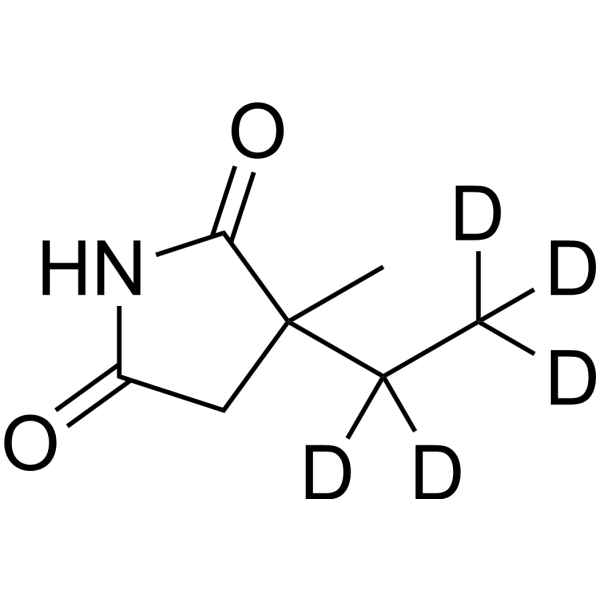
-
- HY-111828
-
TTA-A2
1 Publications Verification
|
Calcium Channel
|
Neurological Disease
|
|
TTA-A2 is a potent, selective and orally active t-type voltage gated calcium channel antagonist with reduced pregnane X receptor (PXR) activation. TTA-A2 is equally potent against the Cav3.1 (a1G) and Cav3.2 (a1H) channels with IC50 values of 89 nM and 92 nM, respectively, at -80 and -100 mV holding potentials. TTA-A2 can be used for the research of a variety of human neurological diseases, including sleep disorders and epilepsy .
|
-
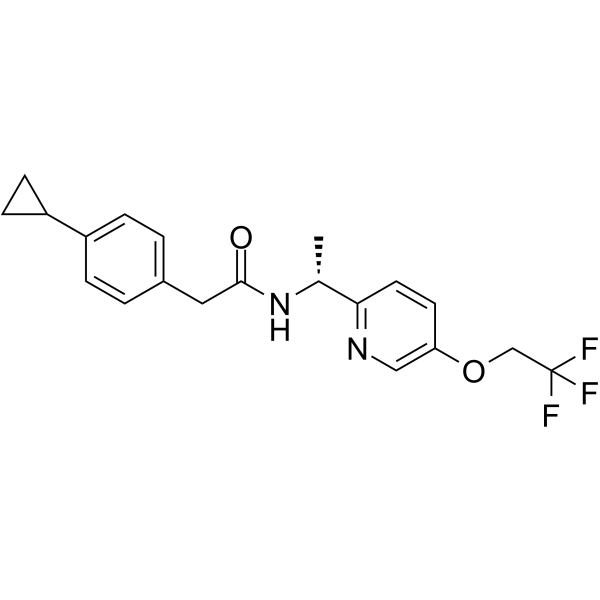
-
- HY-B0358A
-
|
|
Calcium Channel
Sodium Channel
Dopamine Receptor
|
Neurological Disease
|
|
Flunarizine dihydrochloride is a potent dual Na +/Ca 2+ channel (T-type) blocker. Flunarizine dihydrochloride is a D2 dopamine receptor antagonist. Flunarizine dihydrochloride shows anticonvulsive and antimigraine activity, and peripheral vasodilator effects .
|
-
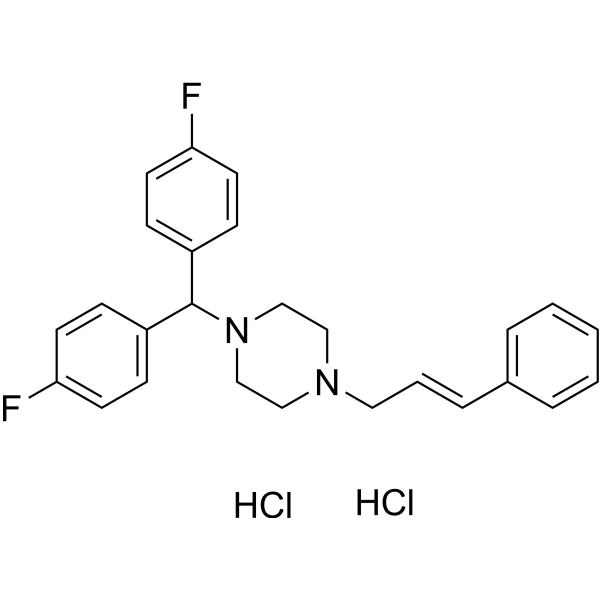
-
- HY-B0358
-
|
|
|
|
|
Flunarizine is a potent dual Na +/Ca 2+ channel (T-type) blocker. Flunarizine is a D2 dopamine receptor antagonist. Flunarizine shows anticonvulsive and antimigraine activity, and peripheral vasodilator effects .
|
-
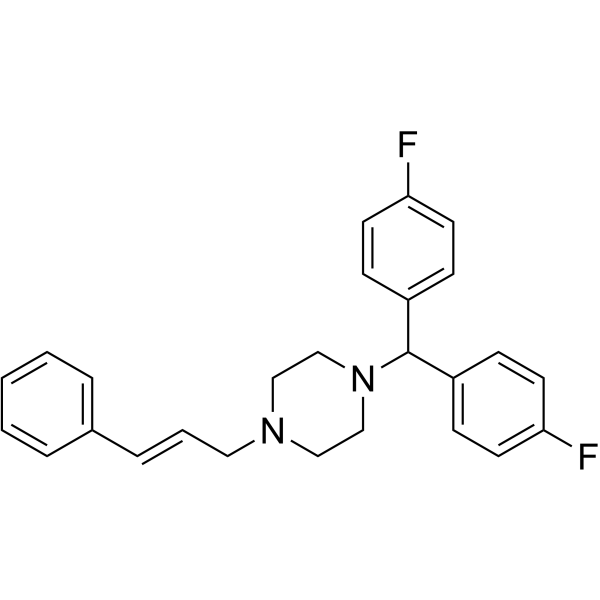
-
- HY-B1378S
-
|
|
Isotope-Labeled Compounds
Calcium Channel
|
Neurological Disease
|
|
Ethosuximide-d3 is the deuterium labeled Ethosuximide. Ethosuximide, a widely prescribed anti-epileptic agent, improves the phenotypes of multiple neurodegenerative disease models and blocks the low voltage activated T-type calcium channel[1][2].
|
-

-
- HY-W032013
-
-
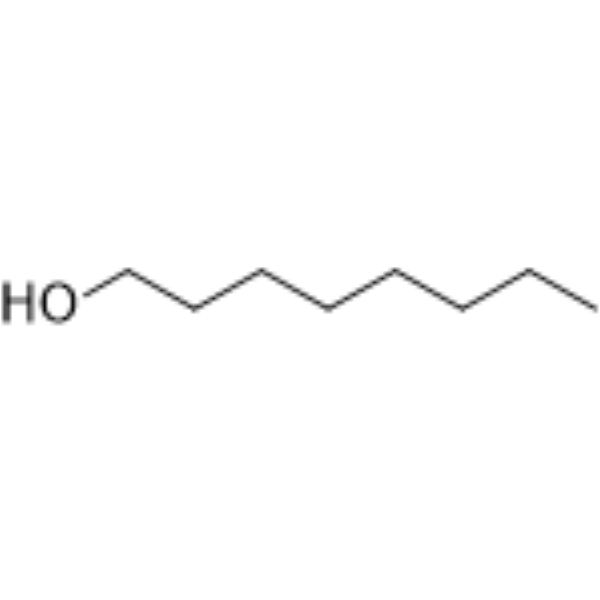
-
- HY-P1078
-
|
|
Calcium Channel
|
Neurological Disease
|
|
Huwentoxin XVI, an analgesic, is a highly reversible and selective mammalian N-type calcium channel (IC50 of ~60 nM) antagonist from Chinese tarantula Ornithoctonus huwena. Huwentoxin XVI has no effect on voltagegated T-type calcium channels, potassium channels or sodium channels .
|
-
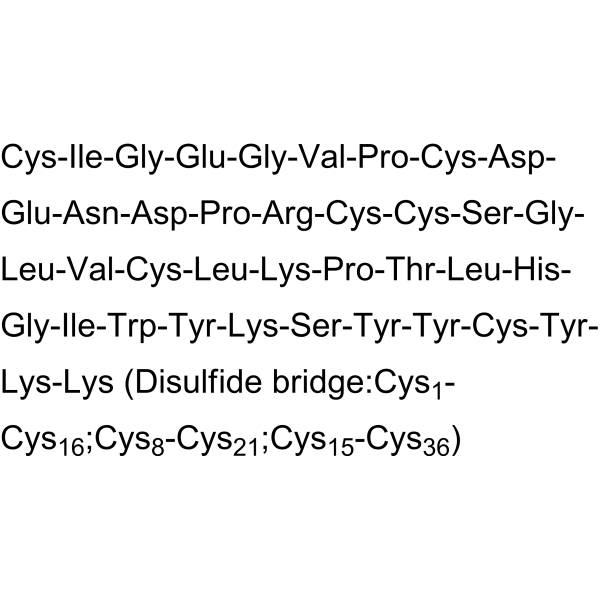
-
- HY-P1078A
-
|
|
Calcium Channel
|
Neurological Disease
|
|
Huwentoxin XVI TFA, an analgesic, is a highly reversible and selective mammalian N-type calcium channel (IC50 of ~60 nM) antagonist from Chinese tarantula Ornithoctonus huwena. Huwentoxin XVI TFA has no effect on voltagegated T-type calcium channels, potassium channels or sodium channels .
|
-

-
- HY-136909
-
|
|
Calcium Channel
|
Cardiovascular Disease
|
|
SR33805 is a potent Ca 2+ channel antagonist, with EC50s of 4.1 nM and 33 nM in depolarized and polarized conditions, respectively. SR33805 blocks L-type but not T-type Ca 2+ channels. SR33805 can be used for the research of acute or chronic failing hearts .
|
-

-
- HY-W032013S
-
|
Octanol-d17
|
Calcium Channel
Endogenous Metabolite
|
|
|
1-Octanol-d17 is the deuterium labeled 1-Octanol[1]. 1-Octanol (Octanol), a saturated fatty alcohol, is a T-type calcium channels (T-channels) inhibitor with an IC50 of 4 μM for native T-currents[2]. 1-Octanol is a highly attractive biofuel with diesel-like properties[3].
|
-

-
- HY-W032013S1
-
|
Octanol-d2
|
Calcium Channel
Endogenous Metabolite
|
|
|
1-Octanol-d2 is the deuterium labeled 1-Octanol[1]. 1-Octanol (Octanol), a saturated fatty alcohol, is a T-type calcium channels (T-channels) inhibitor with an IC50 of 4 μM for native T-currents[2]. 1-Octanol is a highly attractive biofuel with diesel-like properties[3].
|
-

-
- HY-151451
-
|
|
Calcium Channel
|
Neurological Disease
|
|
Cav 3.2 inhibitor 2 is a Cav3.2 T-type Ca 2+ channels inhibitor with an IC50 of 0.09339 μM under -80mV holding potential. Cav 3.2 inhibitor 2 potently suppresses T-channel-dependent somatic and visceral pain in mice. Cav 3.2 inhibitor 2 can be used for the research of intractable pain .
|
-
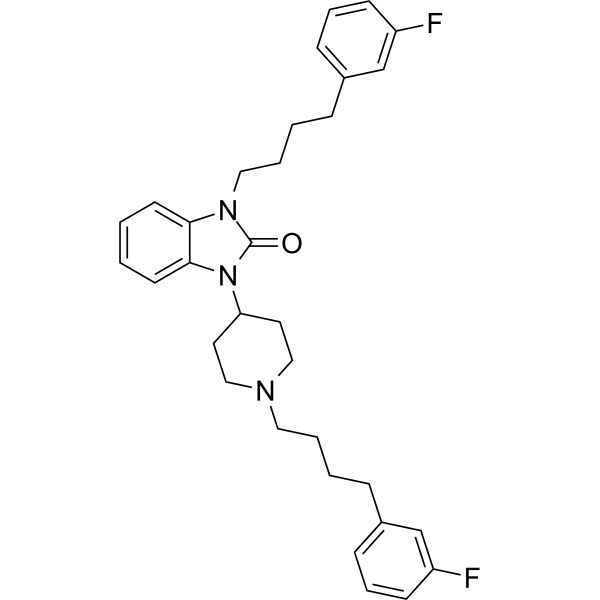
-
- HY-P1079
-
|
|
Calcium Channel
|
Neurological Disease
|
|
ω-Agatoxin TK, a peptidyl toxin of the venom of Agelenopsis aperta, is a potent and selective P/Q type Ca 2+ channel blocker. ω-Agatoxin TK inhibits the high K + depolarisation-induced rise in internal Ca 2+ in cerebral isolated nerve endings with an IC50 of of 60 nM. ω-Agatoxin TK has no effect on L-type, N-type, or T-type calcium channels .
|
-
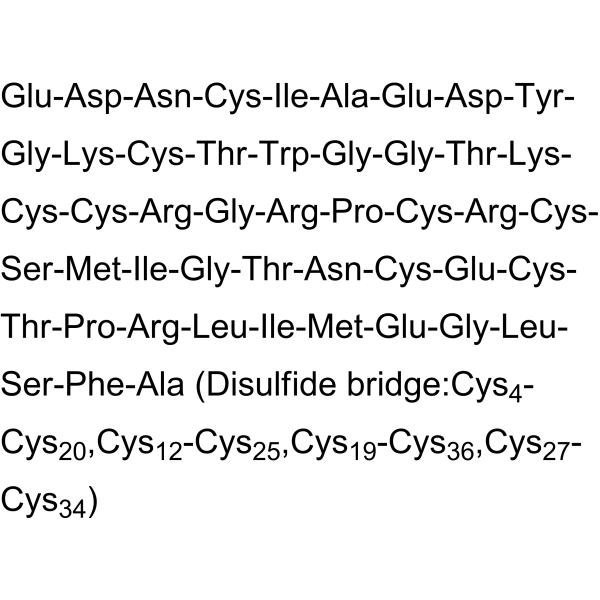
-
- HY-103309S
-
|
|
Calcium Channel
|
Neurological Disease
|
|
ML218-d9 is the deuterium labeled ML218. ML218 is a potent, selective and orally active T-type Ca2+ channels (Cav3.1, Cav3.2, Cav3.3) inhibitor with IC50s of 310 nM and 270 nM for Cav3.2 and Cav3.3, respectively. ML218 inhibits the burst activity in subthalamic nucleus (STN) neurons. ML218 has no significant inhibition of L- or N-type calcium channels, KATP or hERG potassium channels. ML218 can penetrate the blood-brain barrier[1].
|
-
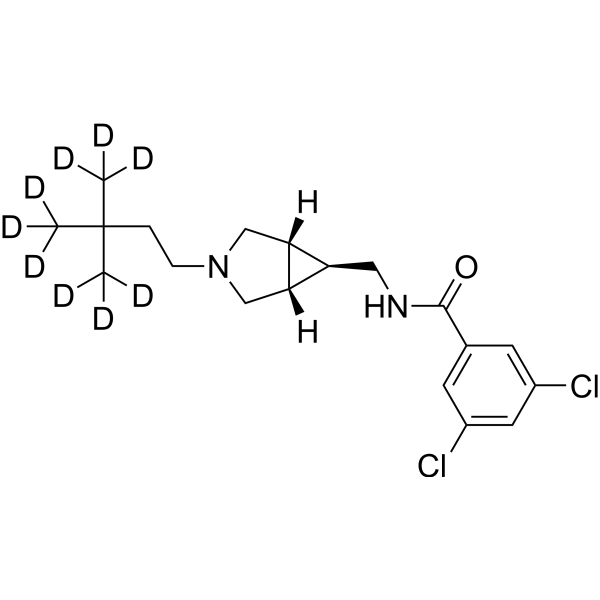
-
- HY-147639
-
|
|
Calcium Channel
|
Neurological Disease
|
|
Cav 2.2/3.2 blocker 1 (Compound 9e) is a neuronal calcium channel blocker with IC50 values of 78 μM and 80 μM against Cav2.2 and Cav3.2, respectively. Cav 2.2/3.2 blocker 1 can penetrate the CNS .
|
-
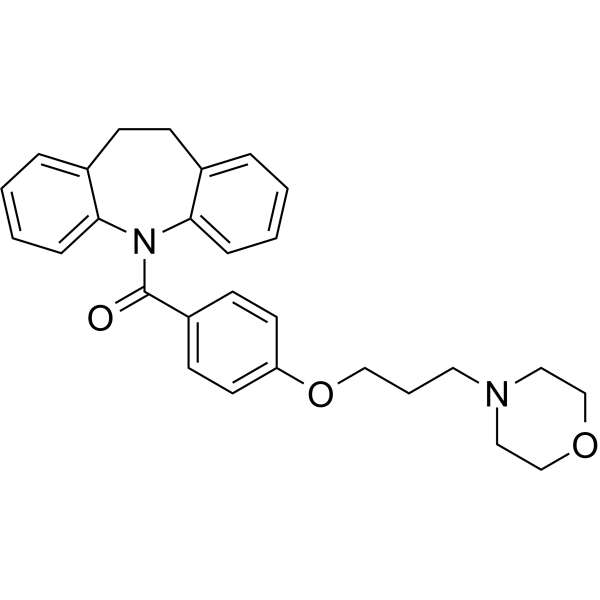
| Cat. No. |
Product Name |
Target |
Research Area |
-
- HY-P5869
-
|
|
Calcium Channel
Sodium Channel
|
Neurological Disease
|
|
Kurtoxin is a selective Cav3 (T-type) voltage-gated Ca 2+ channel gating inhibitor with a Kd of 15 nM for Cav3.1 (α1G T-type) Ca 2+ channel. Kurtoxin can interact with high affinity with native neuronal high-threshold L-type, N-type, and P-type Ca 2+ channels in central and peripheral neurons. Kurtoxin also shows cross-reactivity with voltage-gated Na + channel .
|
-
- HY-P1078
-
|
|
Calcium Channel
|
Neurological Disease
|
|
Huwentoxin XVI, an analgesic, is a highly reversible and selective mammalian N-type calcium channel (IC50 of ~60 nM) antagonist from Chinese tarantula Ornithoctonus huwena. Huwentoxin XVI has no effect on voltagegated T-type calcium channels, potassium channels or sodium channels .
|
-
- HY-P1078A
-
|
|
Calcium Channel
|
Neurological Disease
|
|
Huwentoxin XVI TFA, an analgesic, is a highly reversible and selective mammalian N-type calcium channel (IC50 of ~60 nM) antagonist from Chinese tarantula Ornithoctonus huwena. Huwentoxin XVI TFA has no effect on voltagegated T-type calcium channels, potassium channels or sodium channels .
|
-
- HY-P1079
-
|
|
Calcium Channel
|
Neurological Disease
|
|
ω-Agatoxin TK, a peptidyl toxin of the venom of Agelenopsis aperta, is a potent and selective P/Q type Ca 2+ channel blocker. ω-Agatoxin TK inhibits the high K + depolarisation-induced rise in internal Ca 2+ in cerebral isolated nerve endings with an IC50 of of 60 nM. ω-Agatoxin TK has no effect on L-type, N-type, or T-type calcium channels .
|
| Cat. No. |
Product Name |
Category |
Target |
Chemical Structure |
| Cat. No. |
Product Name |
Chemical Structure |
-
- HY-W032013S
-
|
|
|
1-Octanol-d17 is the deuterium labeled 1-Octanol[1]. 1-Octanol (Octanol), a saturated fatty alcohol, is a T-type calcium channels (T-channels) inhibitor with an IC50 of 4 μM for native T-currents[2]. 1-Octanol is a highly attractive biofuel with diesel-like properties[3].
|
-

-
- HY-B1378S1
-
|
|
|
Ethosuximide-d5 is deuterium labeled Ethosuximide. Ethosuximide, a widely prescribed anti-epileptic agent, improves the phenotypes of multiple neurodegenerative disease models and blocks the low voltage activated T-type calcium channel.
|
-

-
- HY-B1378S
-
|
|
|
Ethosuximide-d3 is the deuterium labeled Ethosuximide. Ethosuximide, a widely prescribed anti-epileptic agent, improves the phenotypes of multiple neurodegenerative disease models and blocks the low voltage activated T-type calcium channel[1][2].
|
-

-
- HY-W032013S1
-
|
|
|
1-Octanol-d2 is the deuterium labeled 1-Octanol[1]. 1-Octanol (Octanol), a saturated fatty alcohol, is a T-type calcium channels (T-channels) inhibitor with an IC50 of 4 μM for native T-currents[2]. 1-Octanol is a highly attractive biofuel with diesel-like properties[3].
|
-

-
- HY-103309S
-
|
|
|
ML218-d9 is the deuterium labeled ML218. ML218 is a potent, selective and orally active T-type Ca2+ channels (Cav3.1, Cav3.2, Cav3.3) inhibitor with IC50s of 310 nM and 270 nM for Cav3.2 and Cav3.3, respectively. ML218 inhibits the burst activity in subthalamic nucleus (STN) neurons. ML218 has no significant inhibition of L- or N-type calcium channels, KATP or hERG potassium channels. ML218 can penetrate the blood-brain barrier[1].
|
-

| Cat. No. |
Product Name |
Application |
Reactivity |
-
- HY-P82974
-
|
TNNT2; Cardiac muscle troponin T; Troponin T; cardiac muscle; troponin T type 2 (cardiac)
|
WB, IHC-P
|
Human, Mouse, Rat |
Your information is safe with us. * Required Fields.
Inquiry Information
- Product Name:
- Cat. No.:
- Quantity:
- MCE Japan Authorized Agent:

























































